Eye surgery “in a dream” - sleep or not sleep - that’s the question
I think the temptation to change for the better after sleep is a natural desire. Asleep toothless - woke up toothy. He fell asleep blind - woke up vigilant. Well and the like. And if the fear of doctors and medicine as a whole is added to this, then to fix something “in a dream” becomes a logical decision. How are we, ophthalmologists? How to make a person sighted "in a dream"?
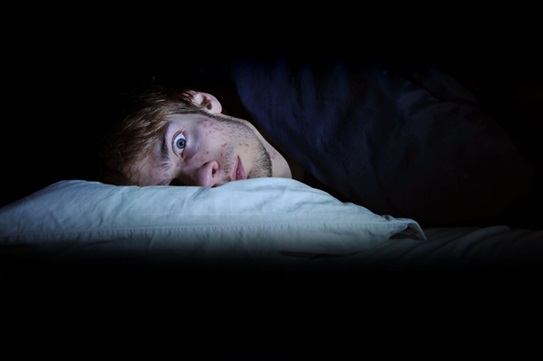
So, what I write in this post is for those whose doctors cause palpitations and fear. Who is afraid of pain.
The fact that ophthalmology has to offer today and in what cases a “drug dream” is necessary, and when it is excessive and harmful.
Let's understand what we mean by the word "drug sleep." The medical term is anesthesia. That is, an artificially induced reversible state of inhibition of the central nervous system, in which sleep occurs, loss of consciousness and memory, relaxation of skeletal muscles, reduction or shutdown of reflexes.
There is no local anesthesia. Anesthesia is always common. Depends on the type of injection - into a vein or “breathing” gases. The main goal of anesthesia is to slow down the body's reactions to surgery, especially pain sensations. If the operation is not painful - anesthesia is not needed!

Operations for which only local anesthesia is needed and for which sleep anesthesia is not needed:
Why? I explain the example ReLEX SMILE - I wrote about it here .
The time spent in the operating room takes only 10 minutes, half the time is spent on “freezing” drops of the eye surface. Then the patient after installing the "spring" and irrigation on the cornea is moved under the laser. The surgeon is at this time 10-20 centimeters away from you, you hear his voice, all the space around is open.
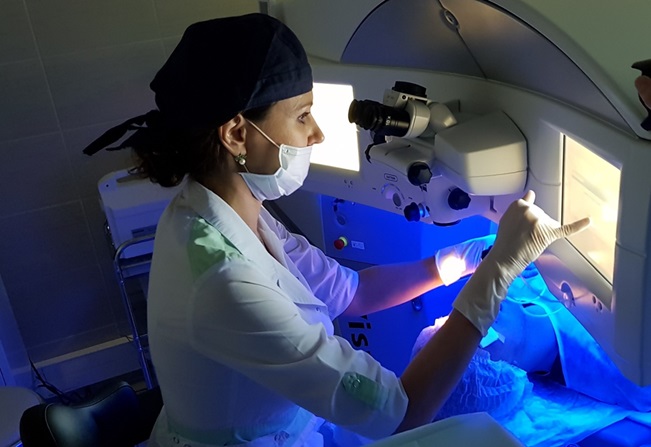

When moving under the laser, you are asked to look at the "green light" in front of the operated eye for only 25 seconds!
These are important 25 seconds, during which a “lens” is formed, an article in the thickness of the cornea. This process is completely painless, absolutely not felt, only the visual picture changes. The first 15 -20 seconds the green light is clearly visible, the last 10 seconds it becomes fuzzy, and your task is simply by inertia to continue to look in the same direction. All! Then 1.5-2 minutes of “fog” in front of the eye, but you are already near the surgeon - you can talk and move, some patients at this time tell about themselves, about their profession or about where they came from. The geography of my patients is huge and just here you will learn a lot of interesting things!
What is the harm if this happens “in a dream”? Centering accuracy suffers!
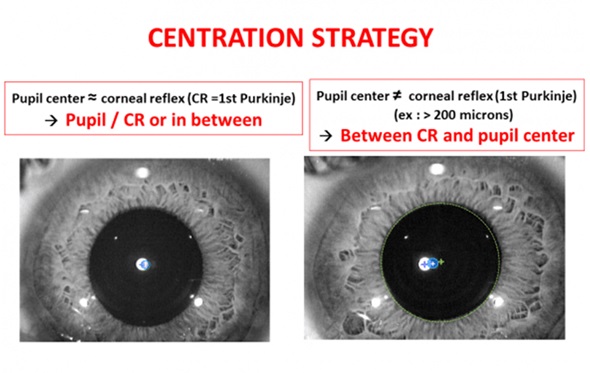
If the patient sleeps in anesthesia, then correct centering does not occur. All laser correction operations require the participation of the patient - in the case of SMILE, the correct cone alignment occurs according to the so-called Purkinje light reflex. This is a glare on the patient’s cornea, and it does not always coincide with the geometric center of the pupil (we can fix it with some devices).
If the patient is in a state of drug sleep, such a centering by reflex is not possible. Have to perform according to the anatomical landmarks - in this case, the accuracy decreases. And if there is astigmatism, then we need markups for cyclotorsia (rotation of the eye). Then even less accurate. And if the patient snores, then you have to deepen the anesthesia or change its type.
But what about LASIK or PRK - the same thing, even worse.
During these procedures, the patient should look at the flashing light - sometimes the laser is operating for 50-60-80 seconds - at this time, the correct positioning occurs due to what you look at. If you sleep, the surgeon manually centers you again on the anatomical landmarks, which do not always coincide with yours. Moreover, with SMILE, alignment takes place once - after fixation with a cone, the eye is fixed, and during LASIK / femtoLASIK fixation and centering due to the surgeon all the time the laser is on.
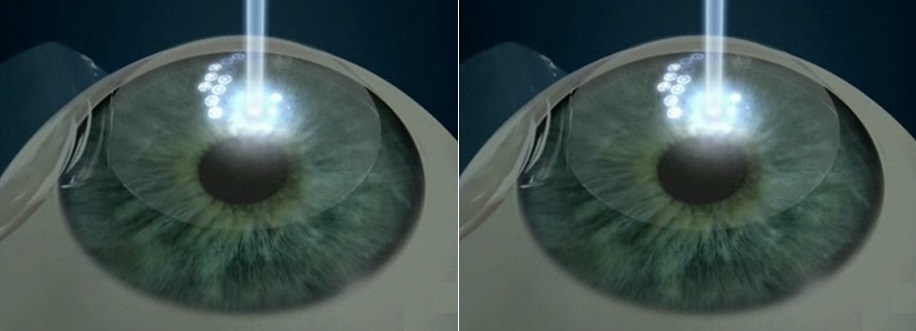
Why? There are no nerve endings in the lens, and in the standard version of the operation, fast 10-15 minutes. Eye drops are instilled, which freeze the surface and allow the surgeon to work comfortably and not experience unpleasant sensations to the patient. At this time, the patient is “present” at the operation, hears and performs simple commands of the surgeon, from sensations - he feels watering and sees the light in front of the operated eye. There are no painful sensations. Very often I talk with patients during such operations, give some advice - then time flies by.
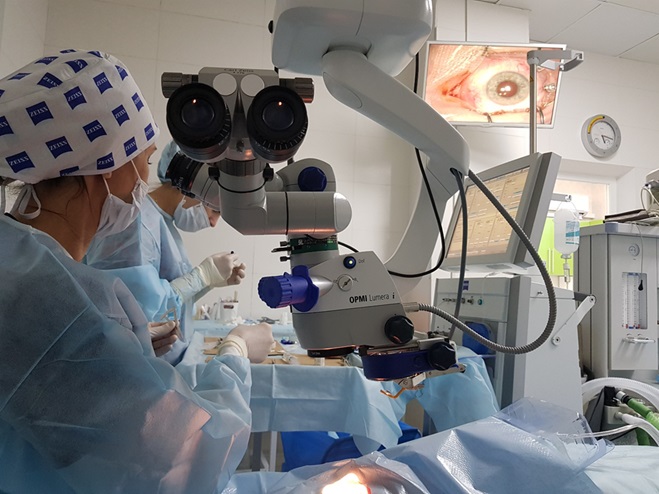
What reasons force us, ophthalmologists, to perform operations with anesthesia for medical reasons:
1. operations that require constant persistent blood pressure and lowering it at the command of a surgeon: for example, a through corneal transplant or an operation on the vitreous and retina.
It looks like this - with the help of a trepan, an eyeball is opened like a tin can. For some time, the eye remains in an “open sky” state - and at this time, an increase in intraocular pressure cannot be allowed. The surgeon must quickly apply a “patch” in the form of a donor cornea and restore the tightness of the eye. Why this is necessary - read here: Keratoplasty is the last option to fix your eyes .
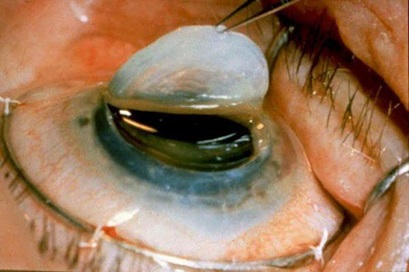
Removal of a murky cornea

"Patch" of a transparent donor cornea
Or operations in diabetes with weak vessels also require a decrease in pressure - lower pressure - less bleeding from blood vessels.
2. Operations in which there are painful moments caused by the course of the operation. For example, these are operations for strabismus or retinal detachment. In these cases, the surgeon “pulls” the eye muscles or presses the eye from the outside (the need for these cases) - it will be uncomfortable and better to be anesthetized at this time.
Then the operation proceeds faster and more precisely - this is also an argument.

3. Operations performed by people with common illnesses, such as older people. When the patient's condition requires constant maintenance of vital functions.
4. If the patient is not able to perform simple tasks of the surgeon and does not understand their meaning - for example, does not know the language (you can use a translator). Eye operations are performed with general anesthesia for children and the elderly with brain damage.
5. We can offer anesthesia for those who have a long-term operation and have problems with the spine - you need to relax the muscles.
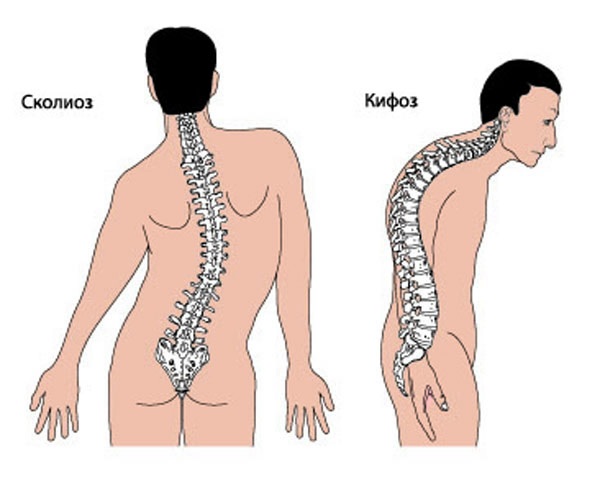
ReLEX SMILE with anesthesia, I performed the first in Russia and the second after a surgeon from Egypt a couple of years ago. It would seem - where is the logic? I am writing that it’s not very cool and sometimes I continue to do it.
“Primum non nocere, seu noli nocere, seu cave ne laedas” - “First of all, do no harm, or be afraid not to harm” - this is one of the medical tenets.
And the logic is that technically this can be done. Only such efforts are needed quite infrequently.
For 1000 eyes in 2-4 cases. When problems with the psyche or intellect, with the musculoskeletal system or vascular system - in short, strictly according to indications.
Using anesthesia and offering it as a blessing is unethical. Anesthesia is an additional serious intervention in the body (and there are no "small" anesthesia), this reduces the accuracy of correction due to objective circumstances independent of the surgeon. It’s like shooting from a “gun on sparrows”.
The surgeon should always discourage you from anesthesia with laser correction, and not call it a "blessing." I must explain all the arguments against, if the motive is just a fear of the operation.
Morality - anesthesia is not needed for laser vision correction - you are just able to lie down calmly for 25 seconds! Do not read the old silly sites that it is painful or scary.
If you are worried, tell your surgeon about it and they will pick up from the arsenal of light soothing drugs that will help you calm down.
In other cases - rely on your surgeon and together choose the best!

So, what I write in this post is for those whose doctors cause palpitations and fear. Who is afraid of pain.
The fact that ophthalmology has to offer today and in what cases a “drug dream” is necessary, and when it is excessive and harmful.
Let's understand what we mean by the word "drug sleep." The medical term is anesthesia. That is, an artificially induced reversible state of inhibition of the central nervous system, in which sleep occurs, loss of consciousness and memory, relaxation of skeletal muscles, reduction or shutdown of reflexes.
There is no local anesthesia. Anesthesia is always common. Depends on the type of injection - into a vein or “breathing” gases. The main goal of anesthesia is to slow down the body's reactions to surgery, especially pain sensations. If the operation is not painful - anesthesia is not needed!

Anesthesia is not needed
Operations for which only local anesthesia is needed and for which sleep anesthesia is not needed:
1. Surgery for laser vision correction. For them absolutely no need for anesthesia! On the contrary, it is harmful. And for all types of laser correction, including modern SMILE
Why? I explain the example ReLEX SMILE - I wrote about it here .
The time spent in the operating room takes only 10 minutes, half the time is spent on “freezing” drops of the eye surface. Then the patient after installing the "spring" and irrigation on the cornea is moved under the laser. The surgeon is at this time 10-20 centimeters away from you, you hear his voice, all the space around is open.


When moving under the laser, you are asked to look at the "green light" in front of the operated eye for only 25 seconds!
These are important 25 seconds, during which a “lens” is formed, an article in the thickness of the cornea. This process is completely painless, absolutely not felt, only the visual picture changes. The first 15 -20 seconds the green light is clearly visible, the last 10 seconds it becomes fuzzy, and your task is simply by inertia to continue to look in the same direction. All! Then 1.5-2 minutes of “fog” in front of the eye, but you are already near the surgeon - you can talk and move, some patients at this time tell about themselves, about their profession or about where they came from. The geography of my patients is huge and just here you will learn a lot of interesting things!
What is the harm if this happens “in a dream”? Centering accuracy suffers!

If the patient sleeps in anesthesia, then correct centering does not occur. All laser correction operations require the participation of the patient - in the case of SMILE, the correct cone alignment occurs according to the so-called Purkinje light reflex. This is a glare on the patient’s cornea, and it does not always coincide with the geometric center of the pupil (we can fix it with some devices).
If the patient is in a state of drug sleep, such a centering by reflex is not possible. Have to perform according to the anatomical landmarks - in this case, the accuracy decreases. And if there is astigmatism, then we need markups for cyclotorsia (rotation of the eye). Then even less accurate. And if the patient snores, then you have to deepen the anesthesia or change its type.
But what about LASIK or PRK - the same thing, even worse.
During these procedures, the patient should look at the flashing light - sometimes the laser is operating for 50-60-80 seconds - at this time, the correct positioning occurs due to what you look at. If you sleep, the surgeon manually centers you again on the anatomical landmarks, which do not always coincide with yours. Moreover, with SMILE, alignment takes place once - after fixation with a cone, the eye is fixed, and during LASIK / femtoLASIK fixation and centering due to the surgeon all the time the laser is on.

2. Operations on the front of the eye with cataracts and glaucoma and other problems
Why? There are no nerve endings in the lens, and in the standard version of the operation, fast 10-15 minutes. Eye drops are instilled, which freeze the surface and allow the surgeon to work comfortably and not experience unpleasant sensations to the patient. At this time, the patient is “present” at the operation, hears and performs simple commands of the surgeon, from sensations - he feels watering and sees the light in front of the operated eye. There are no painful sensations. Very often I talk with patients during such operations, give some advice - then time flies by.

Anesthesia as a blessing
What reasons force us, ophthalmologists, to perform operations with anesthesia for medical reasons:
1. operations that require constant persistent blood pressure and lowering it at the command of a surgeon: for example, a through corneal transplant or an operation on the vitreous and retina.
It looks like this - with the help of a trepan, an eyeball is opened like a tin can. For some time, the eye remains in an “open sky” state - and at this time, an increase in intraocular pressure cannot be allowed. The surgeon must quickly apply a “patch” in the form of a donor cornea and restore the tightness of the eye. Why this is necessary - read here: Keratoplasty is the last option to fix your eyes .

Removal of a murky cornea

"Patch" of a transparent donor cornea
Or operations in diabetes with weak vessels also require a decrease in pressure - lower pressure - less bleeding from blood vessels.
2. Operations in which there are painful moments caused by the course of the operation. For example, these are operations for strabismus or retinal detachment. In these cases, the surgeon “pulls” the eye muscles or presses the eye from the outside (the need for these cases) - it will be uncomfortable and better to be anesthetized at this time.
Then the operation proceeds faster and more precisely - this is also an argument.

3. Operations performed by people with common illnesses, such as older people. When the patient's condition requires constant maintenance of vital functions.
4. If the patient is not able to perform simple tasks of the surgeon and does not understand their meaning - for example, does not know the language (you can use a translator). Eye operations are performed with general anesthesia for children and the elderly with brain damage.
5. We can offer anesthesia for those who have a long-term operation and have problems with the spine - you need to relax the muscles.

Noli nocere - do no harm
ReLEX SMILE with anesthesia, I performed the first in Russia and the second after a surgeon from Egypt a couple of years ago. It would seem - where is the logic? I am writing that it’s not very cool and sometimes I continue to do it.
“Primum non nocere, seu noli nocere, seu cave ne laedas” - “First of all, do no harm, or be afraid not to harm” - this is one of the medical tenets.
And the logic is that technically this can be done. Only such efforts are needed quite infrequently.
For 1000 eyes in 2-4 cases. When problems with the psyche or intellect, with the musculoskeletal system or vascular system - in short, strictly according to indications.
Using anesthesia and offering it as a blessing is unethical. Anesthesia is an additional serious intervention in the body (and there are no "small" anesthesia), this reduces the accuracy of correction due to objective circumstances independent of the surgeon. It’s like shooting from a “gun on sparrows”.
The surgeon should always discourage you from anesthesia with laser correction, and not call it a "blessing." I must explain all the arguments against, if the motive is just a fear of the operation.
Morality - anesthesia is not needed for laser vision correction - you are just able to lie down calmly for 25 seconds! Do not read the old silly sites that it is painful or scary.
If you are worried, tell your surgeon about it and they will pick up from the arsenal of light soothing drugs that will help you calm down.
In other cases - rely on your surgeon and together choose the best!
